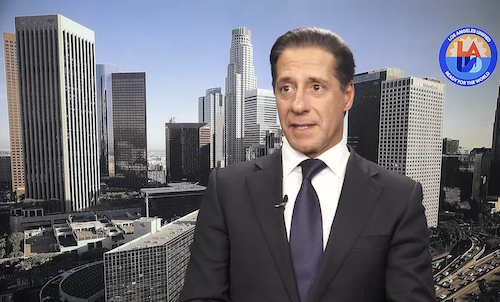Key points:
We need to manage and control our emotions better–and by better, I mean by not managing and controlling, but by utilizing and exercising them.
“I need to control my emotions” is oft-spoken self-talk that we may hear ourselves saying as we reflect on our actions. Or occasionally we may have someone suggest that we need to manage our emotions better. But do we? Is the assumption that emotions and leadership are the oil and water of the workplace actually true? This may (still) be the last bastion of leadership assumptions that needs to be put to sea.
We have spent generations being told that our emotions are those things that should be corralled, encircled, and subdued. It has fomented the ideas that we should “leave our personality at the door” and “keep business and personal separate.”
Research found that school leaders and school principals who coped and adjusted to the pandemic the best where those who were able to utilize, and not ignore, their emotions.
Before the pandemic, strong leaders were often expected to focus their leadership on process, accountability, and strategic planning that presented a very controlled picture of leadership. The leader led and others followed. There was a theoretical rhythm and cadence to how effective leadership should look.
The pandemic changed this mindset.
We saw leaders who were vulnerable, who were open to listening and acknowledged they might not have all the answers. These were leaders who whole-heartedly embraced the ambiguity and looked to thrive in the uncertain messiness. As Bryan Goodwin and Kent Davis of the nonprofit McRel have written, this shift can be difficult for some as it “requires them to reflect on not only what they must do, but more deeply, who they must be as leaders.”
—The Case for Embracing Messy Leadership in Schools
Granted, there are occasions when emotion can interfere with decision making, just as there are times when not showing emotion is a missed opportunity. Perhaps it’s not the separation of both, but rather the utilization of both that’s the sweet spot we should seeking. Perhaps it’s not the word “emotion” that is the issue, but the accompanying words that give it intended or unintended meaning.
When we hear the word emotion in the workplace, it has often been sidled up with other words that on their own sound harmless but in fact spread an underlying frame of mind and intention:
These words imply that emotions, and expression, work in opposition to our ability to lead and make decisions. They hint that emotions are the antithesis of a good leader. They are negative. They will lead to distraction. And because of that, they will make you appear weak. Strong leaders are those who can maintain the separation and not be affected or show emotion.
The use of these words makes emotions appear like a deficit.
What we have found, and are continuing to find, however, is that emotions are a strength. Brene Brown stated it as being authentically you: “Letting go who we think we’re supposed to be and embracing who we are. Choosing authenticity means cultivating the courage to be imperfect, to set boundaries, and to allow ourselves to be vulnerable.” (The Gifts of Imperfection)
This has been echoed in research, showing strong links between trust, output, and performance. Higher levels of emotional connection and trust result in lower stress levels, a reduction in burnout, and a more than 75 percent increase in engagement.
Compared with people at low-trust companies, people at high-trust companies report: 74 percent less stress, 106 percent more energy at work, 50 percent higher productivity, 13 percent fewer sick days, 76 percent more engagement, 29 percent more satisfaction with their lives, and 40 percent less burnout.
By integrating vulnerability into your leadership approach, you can build stronger relationships, invite collaboration and open a pathway for more difficult but important conversations, which will improve the wellness and performance of the company and everyone within.
—Vulnerability at work not about tears and over-shares
It increases the potential of empowerment, and as such increases the likelihood of shared responsibility and collective leadership. Building emotional connections will take the pressure off the individual leader and share it across their teams. So maybe it’s not the word emotion that we need to change, but rather the words that accompany it:
- Exercise
- Utilize
- Cultivate
By selecting these words, we change the use, understanding, and meaning of “emotions.” Emotions are a key tool for forming alliances, building trust, conveying importance, demonstrating empathy, growing inclusion, and can be viewed as the hidden power of effective leadership.
Too often we dismiss the little things we do–the human things–that are crucial in building relationships, trust, and a positive school climate. Now’s the time the celebrate these unconventional measures of success.
—The Human Side in Developing a Positive School Climate
Leaders play a major role in surfacing, understanding, and balancing individual values on our teams. When we acknowledge and embrace the messiness that comes with being human, each of us with a desire for shared community and purpose, we’re one step closer to unleashing the full potential of our teams and the teams we serve.
—How to Embrace the Human Side of Leadership
“Our emotions are a big part–maybe the biggest part–of what makes us human,” says Marc Brackett, author of Permission to Feel, “and yet we go through life trying hard to pretend otherwise.”
—Reinventing How We Lead
Rather than exclude emotions, we should be utilizing them to their best effect. It is more natural to show our personalities and it’s more authentic. It allows others to show theirs and it reduces stress, increases trust, and often results in greater satisfaction, engagement, and performance. Education is a relationship-driven sector and to ignore the tools and skills that enhance, build, and grow relationships would professionally be a backwards step.
The emotion-problem school leaders and principals now face is to unlearn what we have assumed and help leaders embrace their emotions. It requires a new understanding and a new mindset–a mindset of effective leadership. It requires us to look at our emotions from a new perspective. Not as things to control, but as tools to utilize.
The captain of the ship has sailed and it is time for us to lead in a new way.




